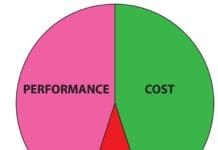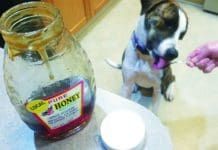Home Search
allergies - search results
If you're not happy with the results, please do another search
10 Weight Loss Tips for Senior Dogs
Older dogs, like older people, have an easier time getting around if they aren't overweight. Losing weight can be a challenge for dogs at any age, but more so as dogs grow older. Still, weight loss for dogs is worth the effort. Slender dogs not only get around more easily, but also actually live longer. A 14-year study showed that dogs fed 25 percent fewer calories than their free-fed littermates lived nearly two years longer, showed fewer visible signs of aging, and enjoyed an extra three years of pain-free mobility before developing canine arthritis.
Every Dog is Different: Examples of Dog Food Buying Decisions
We'd love for you to take our dry dog food selection criteria into account as a starting place only that, though, because there are a lot of other factors that people take into consideration when buying food for their dogs, and everyone will weigh these factors differently, depending on their individual needs and beliefs. If we made up a pie chart illustrating the weight of these factors, each dog owner's important food buying factors" chart would be different
2017 Whole Dog Journal Approved Dry Dog Food List
The companies that appear on the Whole Dog Journal Approved Foods list offer products that meet Whole Dog Journal's basic dog food selection criteria: they contain good ingredients, they dont contain any red flag ingredients, and their makers are reasonably transparent about their manufacturing and formulation. This dog food list is a start meant to give you examples of companies with better-quality products than those found in grocery and big-box stores, and lower-end pet supply stores. The list purposely contains products that range in quality and cost, from wildly expensive to not cheap. Inexpensive foods will not meet our selection criteria, because its impossible to make a low-cost dog food that contains superior ingredients.
Raw Honey for Dogs
Feed your dog raw honey rather than processed honey so that your dog receives all the nutritional benefits it has to offer. Raw honey is known to improve allergies in dogs, soothe kennel cough, help dogs' digestive systems and more! Raw honey is strained to remove debris, but that's it. It's otherwise as natural as you can get. Shop at the farmer's market or do an Internet search for local beekeepers. Processed honey, on the other hand, is manufactured with heat, which thins it and destroys many of its beneficial attributes.
Canine Parvovirus Vaccine, Symptoms, and Treatment
How is parvo spread among dogs? Whole Dog Journal discusses a number of canine parvovirus prevention and treatment approaches taken by veterinarians and dog guardians today. Reactions to parvovirus vary widely. In a world where parvovirus is literally everywhere, parvo kills some dogs and leaves others unscathed. And in the debate about parvo vaccination, some people vaccinate their dogs early and often, while others refuse to vaccinate against parvo at all.
How to Furnish a Home for Dogs
My husband Brad and I like to think we keep a pretty clean house, but sometimes we're amazed at how much hair and dirt...
2016 Canned Dog Food Review
but may also stock lower-quality
Fleas and Dogs Just Aren’t a Good Match
I was visiting a friend recently, and had brought (with her permission) my adolescent dog Woody along for the ride. Her (quite elderly) mother asked me, as we entered the home, "Does he have fleas?" I assured her he does not, but the brief exchange did bring up memories.
Years ago, I had a Border Collie, Rupert, who was incredibly hypersensitized to flea bites. I've met dogs with more severe flea allergies, but I can't imagine living with one. I, too, grilled my friends at the front door about their dogs' flea-bearing status. If they professed not to know, or were avowed non-users of flea-control products, they could forget coming into MY house. We could go for a walk together instead! I had to protect Rupert at all costs.
Years ago, I had a Border Collie, Rupert, who was incredibly hypersensitized to flea bites. I've met dogs with more severe flea allergies, but I can't imagine living with one. I, too, grilled my friends at the front door about their dogs' flea-bearing status. If they professed not to know, or were avowed non-users of flea-control products, they could forget coming into MY house. We could go for a walk together instead! I had to protect Rupert at all costs.
The Dog is Throwing Up!: Your Guide to Dog Vomiting
When dogs feel nauseated and are about to throw up, they often drool, lick their lips, swallow excessively, and stand head down looking worried. Many dogs look for or turn to their owners when they're about to vomit, which can signal alert caregivers to move their pets to a better location! In time you might be able to train your dog to throw up where it does the least damage.
Doggy Inside Jokes: The Unconventional Cues Our Dogs Learn
which means to stop his attempts to be noticed and petted.üTo teach her dog Trixie to enjoy coming back into the house (as an alternative to continuing to play outside), Valerie Balwanz initially used treats as a lure, and gave the behavior its own name: Inside
2016 Approved Dry Dog Foods: Whole Dog Journal’s Annual Ratings
Be honest: The main reason that many of you are reading this right now - the reason that many of you have subscribed to...
How to Prevent or Treat Bites from Poisonous Snakes
Thousands of dogs are bitten in the U.S. each year by venomous snakes. Ninety-nine percent of the snakes that bite them are pit vipers, whose Crotalidae family includes Copperheads, Cottonmouths (Water Moccasins), and more than a dozen species of rattlesnake. The remaining one percent are Coral snakes, native to the American Southeast and Mexican border.











